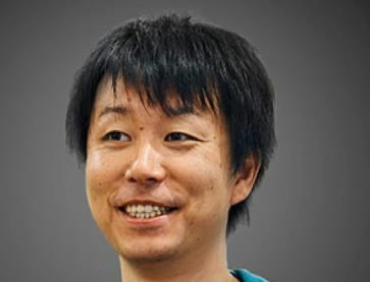Web Site: www.parimics.com
Headquarters: Saratoga, Calif.
Year Founded: 2002
Founder: Axel Kloth, CTO; Royce Johnson, CEO
Investors: Self-funded
Employees: 5
Company Description in 140 characters or less:
“Parimics builds advanced vision technology that enables any system to make real-time
decisions based on streaming video or image data.”
By Royce Johnson
The world is continually capturing trillions of images that could be harnessed to make real-time decisions. 
The TAMs for systems that require advanced vision capability are currently more than $10B in combined size and expected to grow at least 15 percent per year over the next five years. Parimics is committed to delivering advanced vision technology that will serve an expanding list of market segments including the following:
• Medical Imaging Systems
• Robotics Systems
• Military and Defense Systems
• Nanometric Manufacturing and Quality Control Systems
• Security and Surveillance Systems
• Automotive Alert Systems
• Video Search Systems
• CleanTech and GreenTech Applications
Customers who need these advanced vision systems do so for many reasons. Visual data is usually coming too fast to analyze in real time. The required analysis is very time-consuming since most of the time an overwhelming number of images must be analyzed. And critical variables can’t be easily seen by humans, making human analysis too costly, inefficient, or impossible. Today’s image analysis solutions are much too slow to provide adequate support for solving these complex customer issues. Speeds of 20 frames/sec. (FPS) or less are the rule, and probabilistic methods reduce accuracy of current systems. Parimics’ architecture scales from 100 to 20,000 FPS, and our results are deterministic and extremely reliable. We provide a “super-computer-like” architecture specifically designed for advanced image analysis. Our scalable approach to solving customer problems easily meets all their performance and cost requirements. Our goal is to make security and surveillance systems, cars, robots, medical equipment and unmanned vehicles smarter, safer, faster and easier to control and to build.Our Parimics chipset accelerates the analysis of raw video and image files, and then hands that analysis off to higher-level decision software. Today’s vision systems are greatly underpowered when faced with complex environments.
Our chipset will typically increase the speed of analysis by 100-1000X. That factor increases as the complexity of the analysis increases. Parimics’ chipset supports a broad set of vision system customers. Our goal is to be recognized as one of their strategic and premier suppliers.
Parimics’ Unique Technology
Parimics is building a semiconductor chipset that performs like a super-computer and is capable of delivering real-time video and image analysis. Our technology is a change in paradigm that overcomes the basic and inherent limits of current image processing technology. We have been granted two fundamental patents that allow for parallel processing on a pixel-by-pixel basis. Using an innovative architecture, this technology can perform real-time computation of an object’s velocity, acceleration, trajectory and more. Parimics’ architecture allows the processing engine to identify, track and analyze an unlimited number of objects in its field of view. The instantaneous results give the system the power to halt, adjust, identify, notify, analyze, and perform many other functions that will improve the productivity and cost effectiveness of the target system. We are unique in the following ways:
• We use one processor for each pixel.
• Simple, powerful interconnect architecture is used between all parallel
processors in the array.
• Our architecture combines and leverages image independent and image
dependent analyses.
• Video and image analysis can scale from quarter-VGA to more than 20 megapixel
frames.
• Speed of video and image analysis scales from 100 FPS to 20,000 FPS.
• Software solutions are much simpler and faster to develop on Parimics’
architecture.
Our Founders and Advisors
Axel Kloth is the CTO and architect of our chipset. He has an expansive physics, systems and chip architecture background. Axel started his career at Siemens/Infineon where he was instrumental in getting TriCore 1.2 H/W and S/W working for engine control units in VW and Audi vehicles. He then led the turnaround of HotRail with its switch fabric architecture resulting in a successful acquisition. Axel architected and supervised the design of iScale, a switch fabric solution that is today used by NTT to handle every phone and cell phone call in Japan. He also envisioned the first network processor and was the first to attempt to sell the idea on Sand Hill Road.
I am the CEO of Parimics and I have more than thirty years of high tech management experience. I started my career at Intel and eventually co-led the Intel Microprocessor Division for five years during its critical growth phase from the 286 to development of the Pentium chip. I managed Intel’s availability improvement task force during lengthy periods of short microprocessor supply, and teamed with Intel’s VP of Sales in executing strategies to keep Intel’s customer base happy during times of tight supply. I also managed the Intel Vendor of Choice program to its highest ever level of customer service. I left Intel in 1995 and have been a serial entrepreneur and a key founder and contributor to many startups. I was a VP of Marketing at Millennia Software, the first company to voice-enable email and faxing capability. I was also VP of Marketing at ZapMe! which delivered education content via satellite to high schools across America (IPO in Q4 ‘99). I founded Parimics with Axel in 2002 and have been dedicated to delivering cost-effective advanced computer vision to support a whole new set of market possibilities.Parimics recently recruited three well-known processor technologists to join its Technical Advisory Board. The new TAB members are John L. Gustafson, Stanley Mazor, and John Wharton.
John L. Gustafson is widely recognized for his research in the speedup of parallel processing systems. His pioneering work on a 1024-processor nCUBE at Sandia National Laboratories created a watershed in parallel computing, for which he received the inaugural Gordon Bell Award. Gustafson continues to be at the forefront of high performance computing R&D, and is currently Director of Intel Labs in Santa Clara, CA. Stanley Mazor is one of the inventors of the first microprocessor, the Intel 4004. He wrote the software for this revolutionary chip. In 1996, along with his co-inventors (Ted Hoff, Masatoshi Shima, and Federico Faggin) Mazor was inducted into the National Inventors’ Hall of Fame. After leaving Intel, he joined EDA and CAD startups to help popularize Hardware Description Languages for chip design. More recently he has been teaching in the industry and guest lecturing in universities.
John Wharton defined the architecture of the Intel 8051 microcontroller, the highest-volume processor family in Intel history. Since 1980 more than fifty companies have developed software-compatible variations of that device. From 1989 through 2003, Wharton lectured in Electrical Engineering and Computer Science at Stanford. He has published scores of articles on microprocessor hardware, software, and operating system design and holds three patents in memory system architecture. In addition, Parimics has established a technical advisory relationship with widely respected Prof. Gerard Medioni, former Chairman of the Computer Science Department at USC. His department is internationally known for its work on image recognition software, and regularly receives grants and funding to support next generation work in video and image analysis.
Parimics – www.parimics.com










